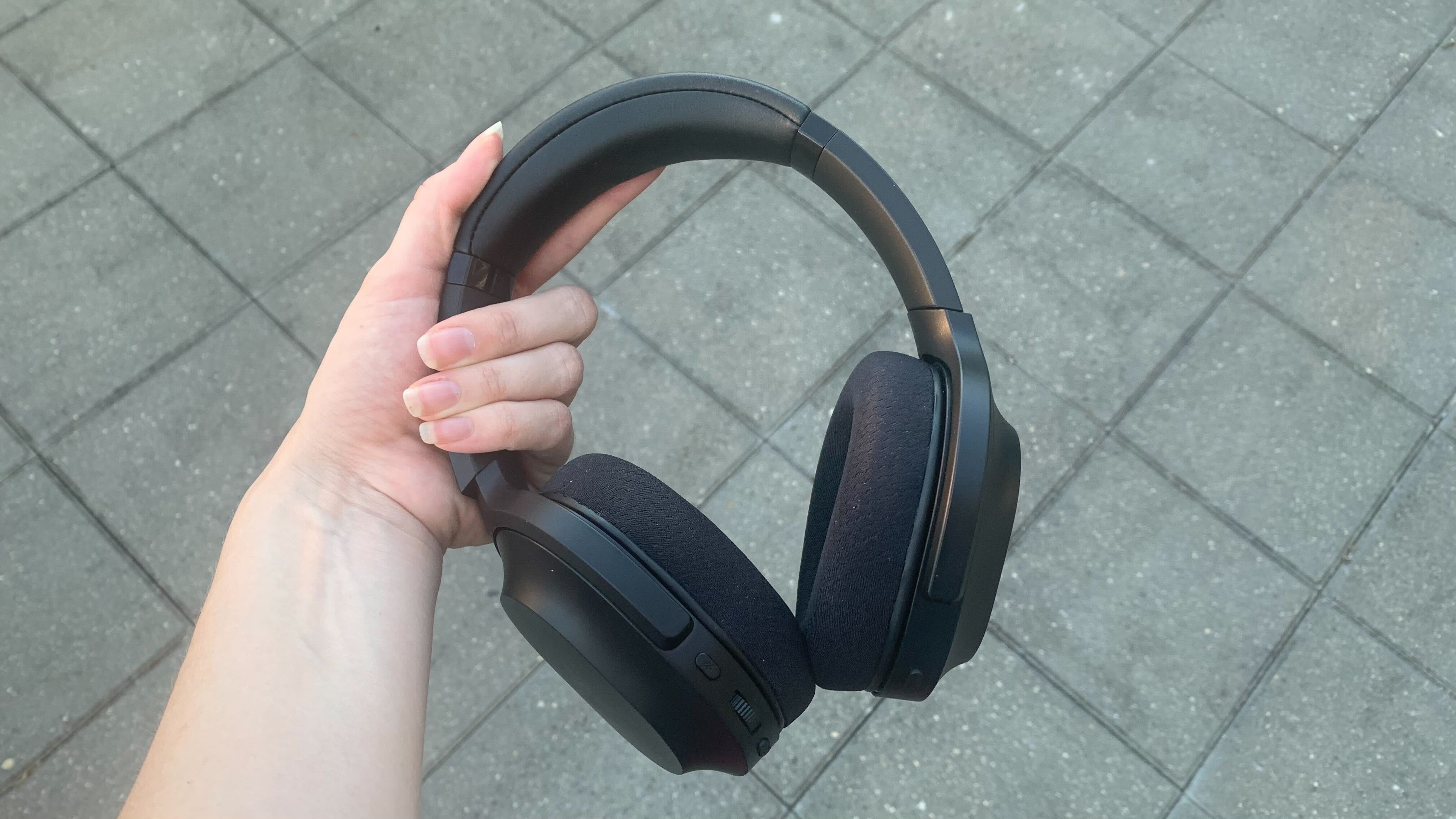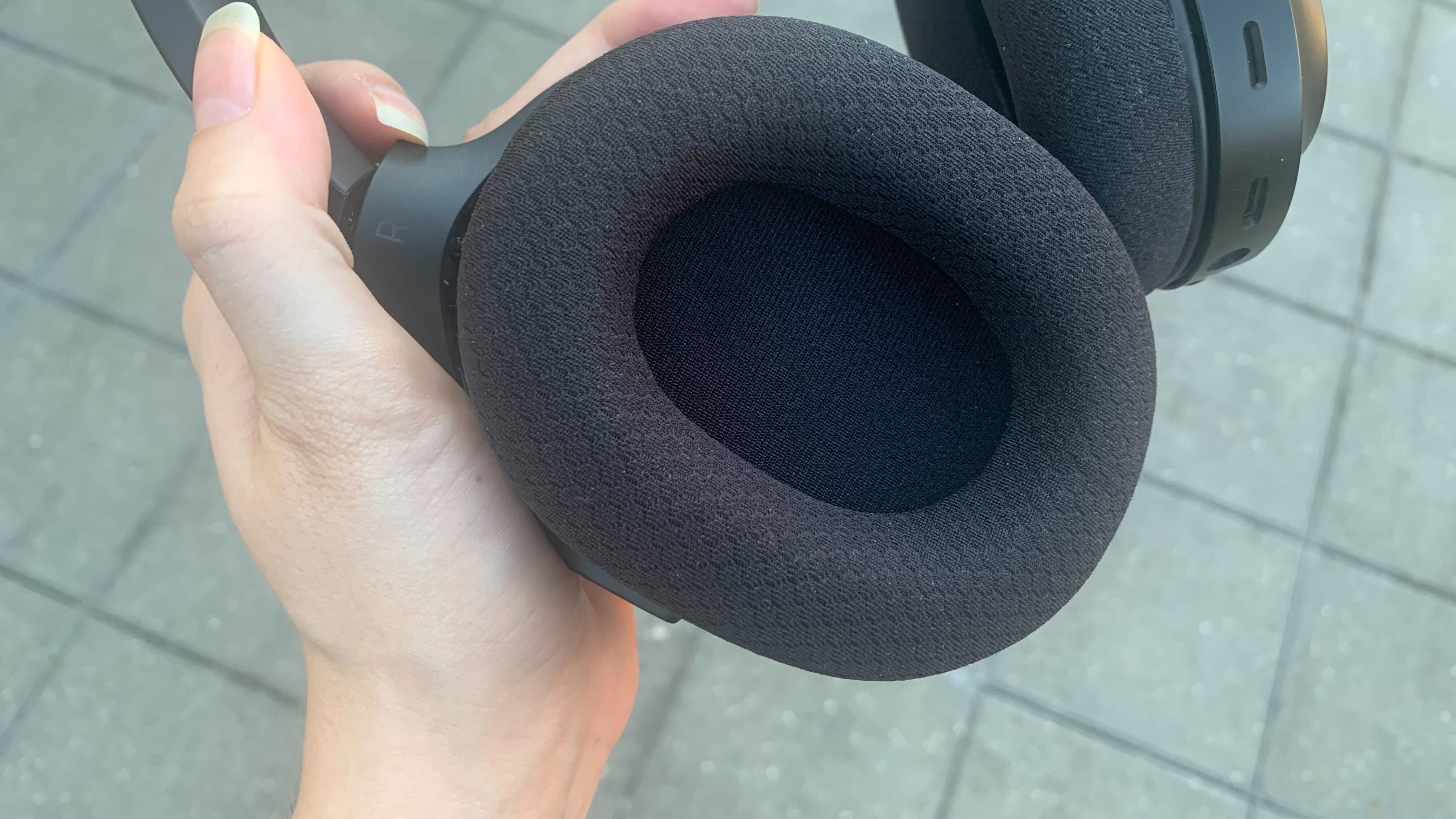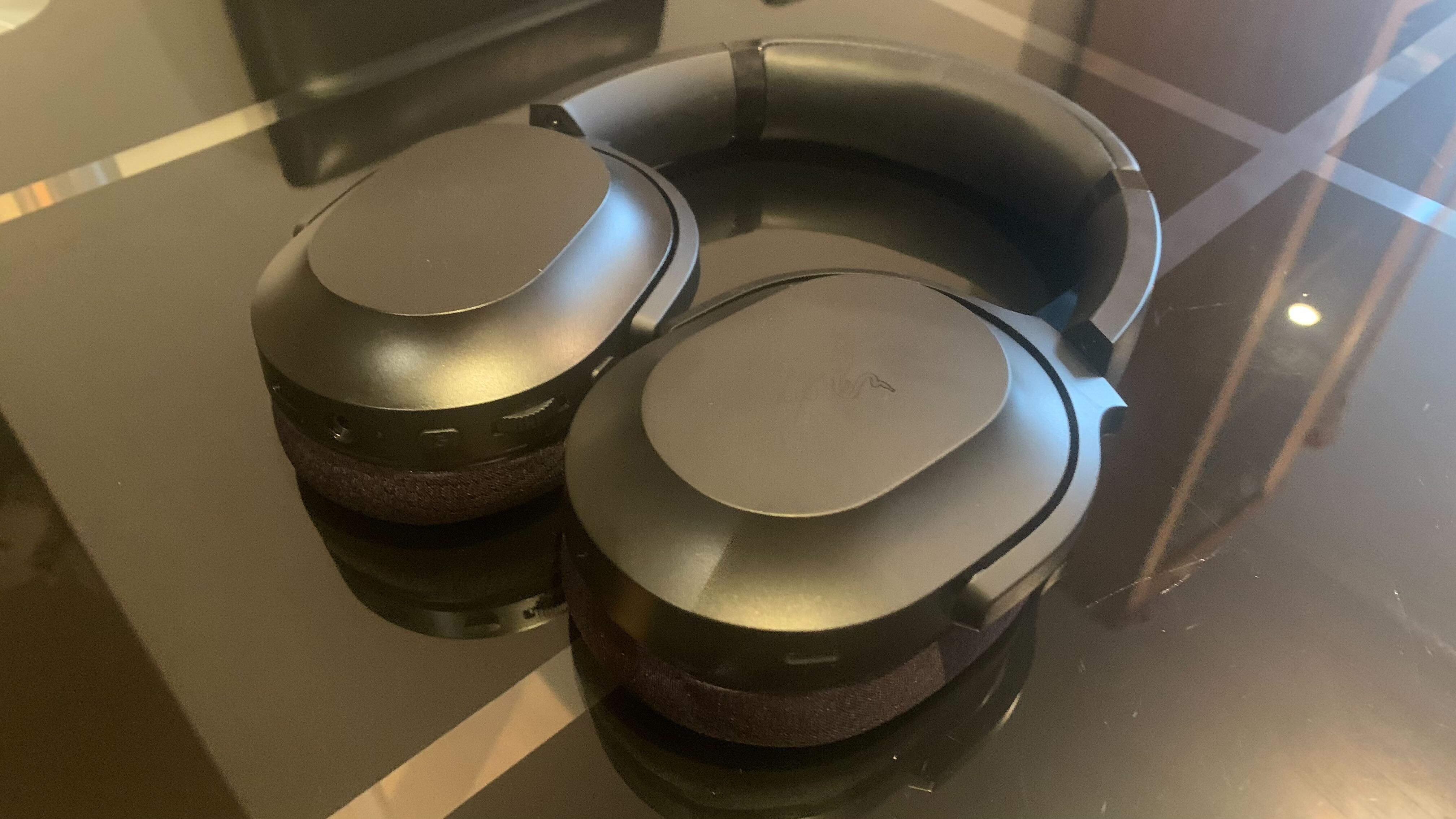Razer Barracuda: Two minute review
The Razer Barracuda is the mid-range model from Razer’s latest line of headsets, leveraging hybrid design and functionality to capture the ever-growing market for casual gamers that need a versatile, multi-purpose headset.
While the Barracuda offers a significant step-up from the Barracuda X, the most basic model, it doesn’t get the active noise cancellation (ANC) features or the sound quality that the top-of-the-line Barracuda Pro offers.
It does benefit, however, from the same comfortable ear cups and headband, 40 hours of battery life and sleek, simple design, making for a surprisingly well-positioned entry to the lifestyle market from Razer.
There are some huge benefits to baking this level of versatility into a headset, but also some cons; namely, that it simply can’t compete with the sound quality found in some of the best PC gaming headsets. Still, for most people considering the Barracuda range, that’s not the priority, and where these headsets shine is in simplicity, style and function.
After spending a week with the Barracuda in various settings, it’s clear that Razer has put time and serious consideration into how the headset will match up to the competition, but it’s skipped out on some really basic steps that would have taken this headset to the next level – a prime example being that this headset is not foldable for portability.
Still, if you manage your expectations on the kind of sound and microphone quality you can get from this kind of hybrid headset, you’ll be impressed with the Barracuda. Stylish, simple and relatively sophisticated tech-wise, we’re impressed with this first stab at more casual peripherals from Razer.

Razer Barracuda: Price and availability
- Price: $159 / £159 / AU$279
- Availability: Available now from Razer.com and various online retailers.
The Razer Barracuda is the mid-range, standard headset in the Barracuda line, and sits nicely between the Barracuda X and Barracuda Pro at $159 / £159 / AU$279. While it’s not as hard to find as its more expensive sibling, it’s still not as readily available as the Barracuda X, which can be found on many online retailers, including Amazon.
Unlike the Barracuda Pro, this headset unfortunately doesn’t come with a case, unless you count the foam-lined box it arrives in (which we don’t). This is a real shame and a bit of a missed opportunity; especially as it also doesn’t come with a stand, so you’ll want to consider getting both of these on top of the base price.
The box does, however, include a 3.5mm headphone cable, a USB-C wireless transmitter, a USB-A to USB-C adapter cable, and a USB-A to USB-C charging cable.
Razer Barracuda: Design
- Comfortable to wear, even long-term
- Sleek, slick and stylish
- Can pass as a non-gaming headset
- Not foldable
The design is easily one of the best parts of the Razer Barracuda. If orange was the new black a few years ago, Razer shows that black is the new black once again with this headset, pairing this elegant coloring with understated yet deliberate slickness in shape and form.
Razer Barracuda Key Specs
These are the specs on the Razer Barracuda sent to TechRadar for review
Connectivity: SmartSwitch dual wireless (2.4GHz and BT) and 3.5 mm analog
Drivers: TriForce Titanium 50mm
Earcups: Memory foam cushions
Weight: 300g
Battery life: 40 hours
Charging port: USB-C
Features: Passive noise cancellation, THX spatial audio, dual integrated noise-cancelling microphones
You’d be forgiven for thinking that Razer had totally abandoned its gaming aesthetic, were it not for the subtly glossy logos on the earpads and the telltale neon green accent visible when using the mute function – otherwise, the headset is incredibly discreet.
Lined with memory foam, the headband and earpieces are wonderfully cushioned, enough so for even the fussiest of users, and the material-covered earpads mean overheating is far less of an issue than you might have with other headsets. The earpieces fit snugly for us, but weren’t tested on larger-eared folks, who may find them a little too cozy.
Along the bottom of each earpad are an array of buttons. On the left, from back to front, you’ll find the mute button, volume wheel, on/off button, 3.5mm analog headphone jack and the USB-C port. On the right, it’s the SmartSwitch button. Both earpads have an in-built microphone at the front. Once you’ve learned your way around the Barracuda, these well-spaced and intuitive controls make for an easy-breezy experience that is hard to nail on headsets.
One major missed opportunity is in portability for this headset – you can’t fold it to stash it away when you’re on the move. In fairness, many of the top wireless headphones on the market are also starting to shy away from foldable form factors, but it’s a great shame considering that the headphone is operating in such a unique space that it wouldn’t capitalize on portability – especially when it doesn’t come with a case.

Razer Barracuda: Features
- App compatibility is nice
- SmartSwitch is not so smart
- No ANC
Compared to the Pro, the regular Razer Baraccuda is much more of an everyday device when it comes to features, and the features it does have are nice but neither essential nor top-performing.
SmartSwitch is the main culprit here, offering, in our personal experience, little-to-no functionality. We tried in several different scenarios to emulate the effortless, slick transitions shown in Razer’s promotional materials but the most we got was a few minutes of awkward silence (and mild panic) when the headset refused to connect to anything at all.
The compatibility with the Razer Audio app is a good value-add, and offers some degree of further customization which is always good to see. From the app, you can tweak your sound settings, silence incoming calls, adjust the mic noise cancellation and check your battery level.

Razer Barracuda: Performance
- Microphone quality is fairly strong – but beware of USB-C conversion issues
- Great sound quality
- Gaming-first features win out
If we start to see a more competitive hybrid gaming headset market, we wouldn’t be surprised to see the Razer Barracuda right up at the top of the rankings. Its audio quality, for what it is, is wonderful, and while it doesn’t have ANC, its passive noise isolation is pretty strong, meaning you can get really stuck into your gaming session.
You’ve got plenty of time to dig in, too; the Razer Barracuda has a fantastic 40-hour battery life, so charging up is the least of your worries. While the Barracuda X does offer slightly more in this department, the Barracuda compensates with a jump up in power and sound quality.
While the design may feel like a deviation from a gamer’s delight in RGB and neon, Razer has stayed true to its roots with the inclusion of Game Mode for the Barracuda range. Switching to a smaller-range connection, the headset can offer a low-latency mode – excellent for the serious gamer.
The Barracuda makes use of the Razer Triforce titanium 50mm drivers, which according to Razer, are designed to deliver exceptional highs, mids and lows – and we’d agree, for the most part. However, the lows are perhaps a little oversold – we’d expect this from a lifestyle headset, though. The sound is wonderfully crisp and clear though, and the THX spatial audio makes a world of difference compared to standard surround sound.
Generally, the dual-integrated ECM beamforming and noise-canceling microphones work pretty well, but nothing beats a boom mic when it comes to gaming headsets.
However, the microphone’s connectivity is where the Barracuda get a little fluffy, in our eyes. The quality when using the dongle and through the 3.5mm audio cable was fine, but when we tried to use the USB-A to USB-C, the microphone quality dipped massively. This might have been something on our end, but isn’t an issue we’ve encountered before.
This was especially prevalent when we tested on a PlayStation 5, where the only viable connection was through the dongle.
Where does the Razer Barracuda sit in the market?
Alongside its Barracuda brethren, the Razer Barracuda holds an interesting spot in the headset market as it stands. While the Barracuda Pro leans towards features more often seen by industry giants in the headset space like ANC, the more modest Barracuda feels like a natural evolution to PC gaming headsets as we know them.
Should you buy a Razer Barracuda?
Buy it if…
Don’t buy if…
Also consider
Razer Barracuda: Report card
| Value | The value of the device is OK, but it would get full marks if it came with a case like the Pro model does. | 4 / 5 |
| Design | Full marks for a well-thought out and intentionally simplistic design. | 5 / 5 |
| Features | For such everyday features, we’d expect an everyday price. | 3.5 / 5 |
| Performance | It’s got all of the right ingredients, but falls short with its microphones. | 4.5 / 5 |
| Total | Were they foldable, fully device agnostic and packaged with a little more bang for your buck, they’d be some of our favourite headphones. | 4 / 5 |
- First reviewed August 2022
How we test
We pride ourselves on our independence and our rigorous review-testing process, offering up long-term attention to the products we review and making sure our reviews are updated and maintained – regardless of when a device was released, if you can still buy it, it’s on our radar.




